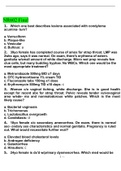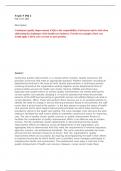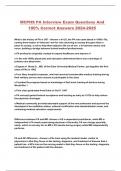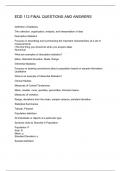Lecture notes
gastrointestinal tests
- Module
- Clinical sciences
- Institution
- Aston University, Birmingham (Aston)
preview:• The endocrine function is producing hormones but exocrine is producing digestive enzymes. • In the second portion will be looking at conditions associated with malabsorption of nutrients and there's quite a few of these. • In comparison to previous lectures where we've looked at...
[Show more]












